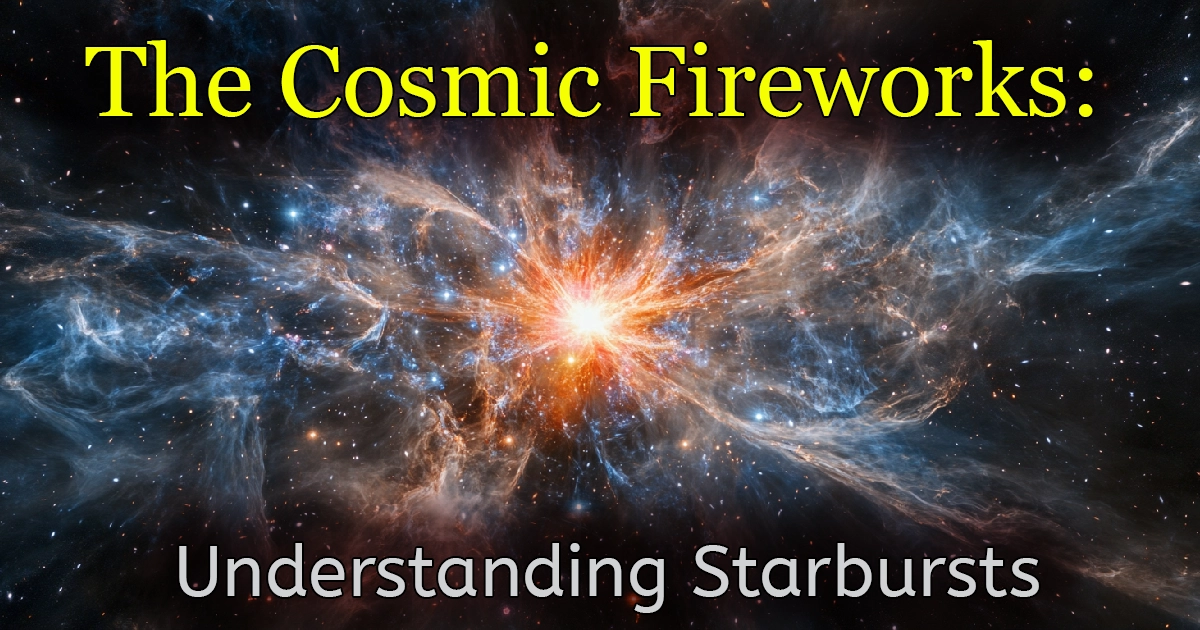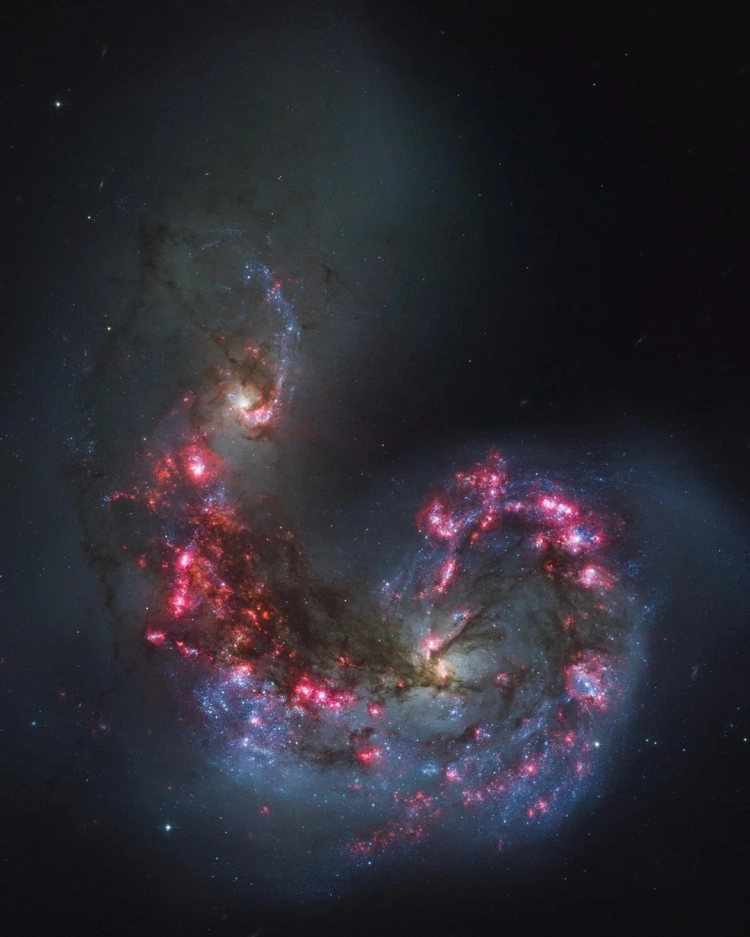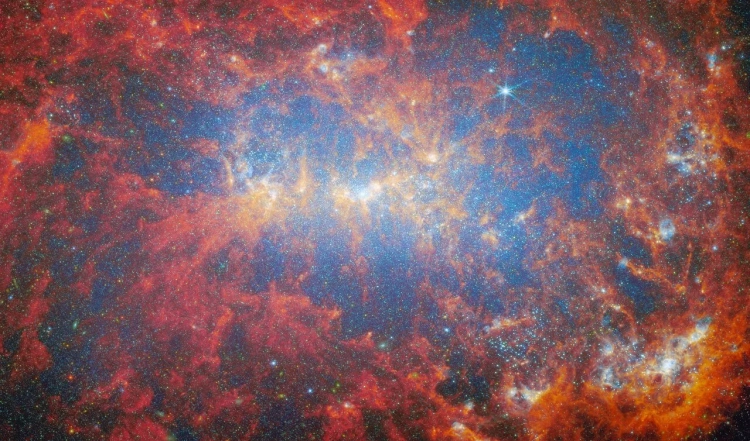

Starbursts are some of the most spectacular and dynamic events in the universe, where stars are born at an accelerated rate, producing breathtaking celestial phenomena. But what exactly are these stellar outbursts? How do they form? And why do astronomers find them so fascinating? Let’s explore the life and times of starbursts through a story of cosmic proportions.
A starburst is a period of intense star formation within a galaxy, where stars are created at a rate much faster than the typical pace of star formation. This phenomenon can occur in small regions or span entire galaxies, leading to the birth of hundreds, thousands, or even millions of new stars over a relatively short period of cosmic time.
In a typical galaxy, like our Milky Way, star formation proceeds at a steady, calm pace—think of it as a small, quiet village where a few stars are born each year. But during a starburst, the scene changes dramatically. It's like a bustling metropolis springing to life overnight, with stars lighting up everywhere. These rapid-fire births fill the galaxy with young, hot, and massive stars that can significantly affect the galaxy's evolution and appearance.
Starbursts are often triggered by the gravitational forces from interactions between galaxies. When two galaxies pass near each other or collide, the immense gravitational pull disturbs their structure, compressing the gas and dust inside. This compression acts like a cosmic match, igniting star formation on a massive scale. Imagine two cars colliding and suddenly igniting fireworks that light up the sky—that’s what happens when galaxies collide, but with a far more brilliant outcome.
Sometimes, a starburst can be driven by activity around a galaxy’s supermassive black hole. When material falls toward the black hole, it heats up and creates powerful jets and winds. These forces push and compress gas clouds in the surrounding area, sparking a wave of star formation. These “nuclear starbursts” are often found at the center of galaxies, surrounding the black hole with young, luminous stars.
Starbursts were first suspected when astronomers noticed peculiar galaxies that seemed unusually bright in specific wavelengths, such as ultraviolet and infrared light. These observations indicated a high concentration of young, hot stars. In the 1970s, with the advent of more powerful telescopes and new techniques, scientists began to identify these galaxies as starburst galaxies—galaxies where star formation was occurring at rates up to 100 times faster than usual.
One of the most well-known starburst galaxies is the Antennae Galaxies, a pair of colliding galaxies located about 45 million light-years away. Their ongoing collision has sparked a massive starburst, making them a playground for astronomers studying star formation. Another famous example is M82, also known as the Cigar Galaxy, which has a central starburst region creating stars at an astonishing pace.

Because starburst regions are often shrouded in dust, many of the young stars formed are hidden from visible light. To peer through these dust clouds, astronomers use infrared and X-ray telescopes. The Spitzer Space Telescope and the Hubble Space Telescope have provided valuable insights by capturing the faint heat signatures of newly born stars, while the Chandra X-ray Observatory helps reveal the energetic activity surrounding these regions.

Radio astronomy has also played an important role in studying starbursts. As new stars form, they heat up surrounding gas clouds, causing them to emit radio waves. By mapping these radio emissions, scientists can visualize the structure and extent of starburst regions, revealing details about the size and distribution of star-forming areas.
Starbursts aren’t just beautiful celestial events; they’re also essential for understanding how galaxies evolve. During a starburst, the energy and radiation from young stars can blow away gas and dust, stopping further star formation. This process, known as "stellar feedback," can shape the future of a galaxy, influencing its star population for billions of years to come.
Starbursts also produce a large number of massive stars, which live fast and die young. When these stars explode as supernovae, they scatter heavy elements like carbon, oxygen, and iron throughout their galaxy. These elements eventually become the building blocks for new generations of stars, planets, and even life.
Starbursts are brief yet explosive episodes in the lifetime of a galaxy, typically lasting only a few million years. After a starburst ends, the galaxy can become exhausted of star-forming material, leading to a period of quiet. However, the impact of a starburst can linger for billions of years, leaving behind clusters of young stars and altered gas distributions that define the galaxy’s future.
Understanding starbursts helps astronomers piece together the life stories of galaxies, from their quiet beginnings to their most energetic and luminous phases. Whether triggered by galactic collisions, supermassive black holes, or other cosmic forces, starbursts are a testament to the dynamic and ever-changing nature of our universe.
So, next time you gaze at the night sky, remember that out there, somewhere, galaxies are lighting up in bursts of star-forming glory—giving birth to the very stars that will one day shape the cosmos as we know it.